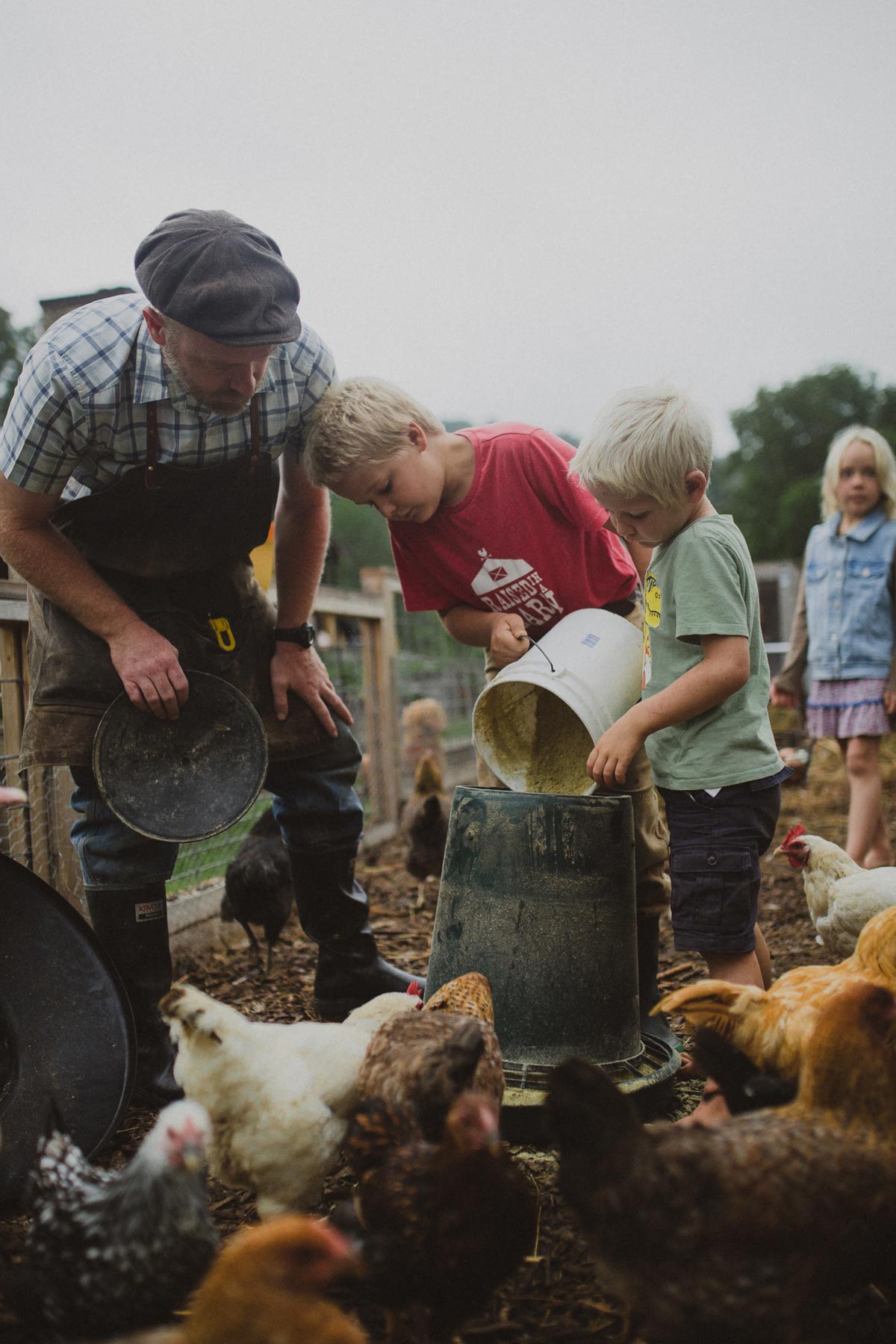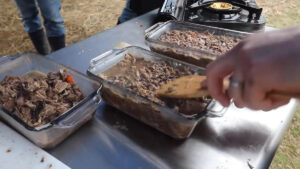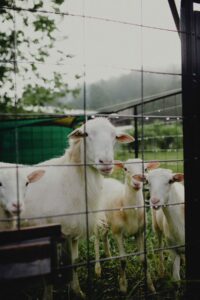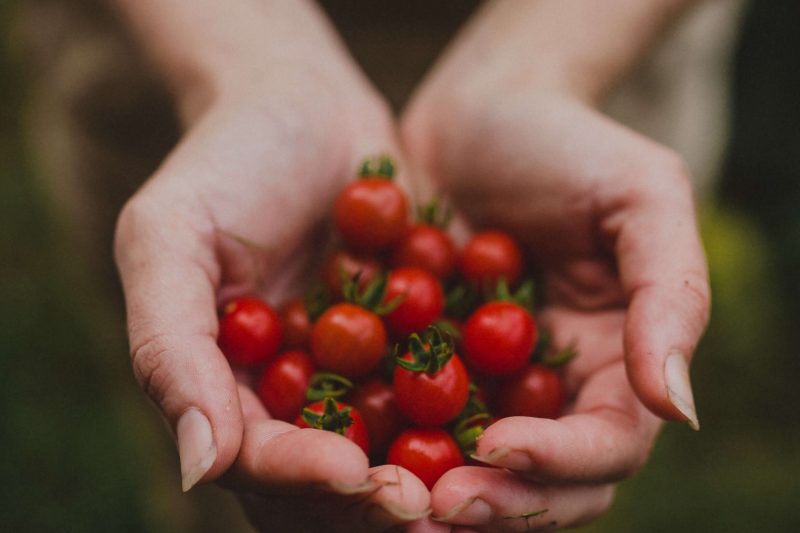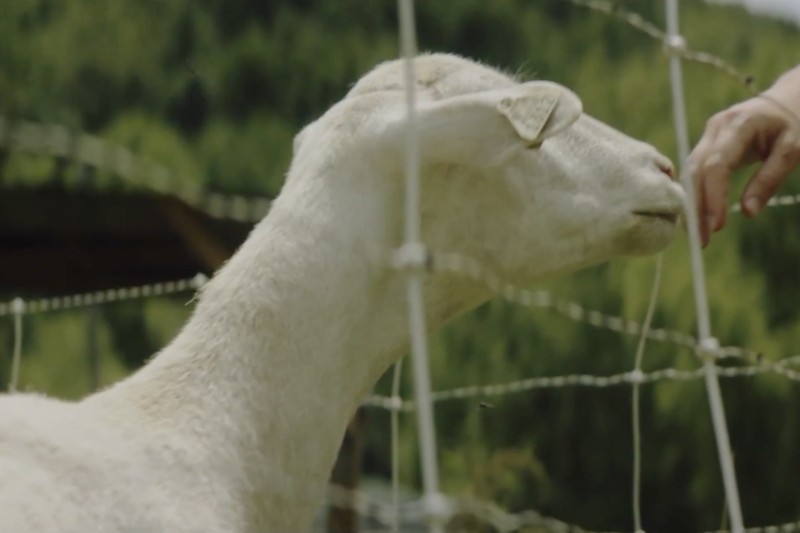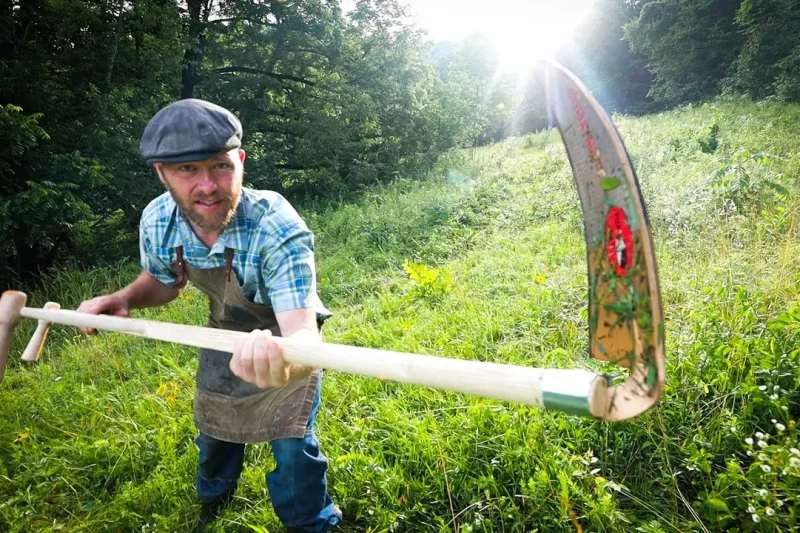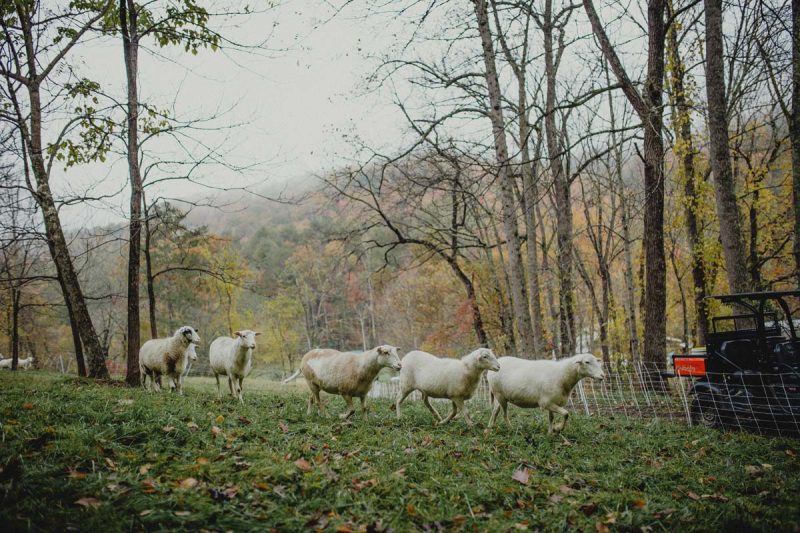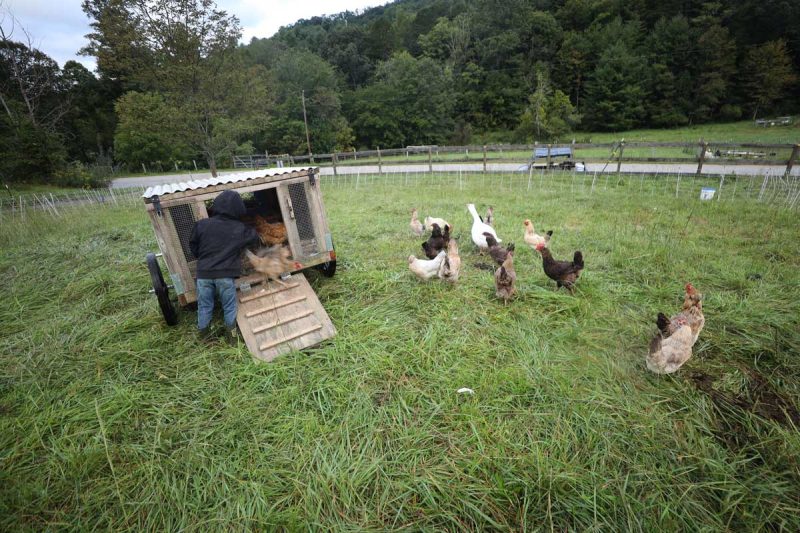Why We Mix Chicken Feed
While running a homestead, we have wanted to ensure that healthy ingredients go into our animals. After all, what goes into our chickens, is what our family will eat when we butcher our chickens or collect their eggs.
Mixing feed ensures that fresh, organic ingredients go into our chickens. Often, commercial feed you purchase at the farm store has been sitting there for some time, so the nutrient levels are dropping.
A sense of pride comes with growing and mixing homemade chicken feed. It’s also a fun family project to do with my kids.
If you’re familiar with what farm animals eat daily, you know it can get expensive.
Organic chicken feed goes for approximately 60 cents per pound, which is why we also use creative ways to feed chickens without grain, as well as letting our chickens free range using our DIY Chickshaw.
You can grind your grains and mix your feed for significantly less money. The savings will increase substantially if you grow corn and soybeans.
Pro-Tip: Check out your farm store prices on specific feeds, compare them, and save money by combining them.
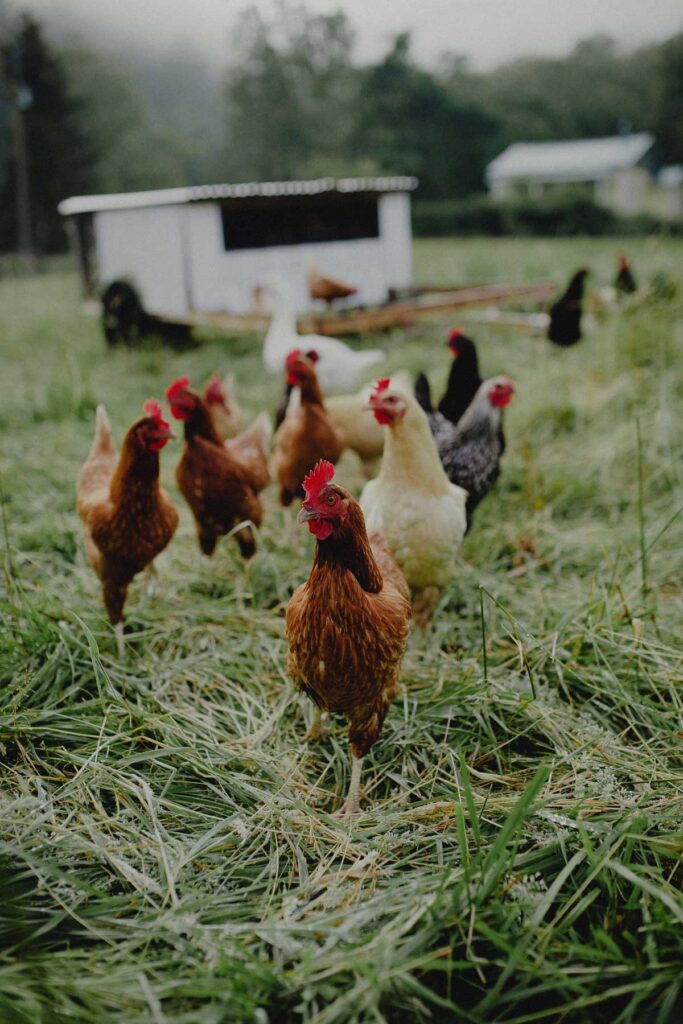
Nutritional Needs of Chickens
When mixing your own chicken feed, consider the nutritional needs of your flock.
- Carbohydrates – Chickens need carbohydrates for energy. Carbs are essential in the winter when colder temperatures increase their energy needs to keep them warm (learn how to keep chickens warm in the winter here). Hens will also need more energy when they begin laying eggs.
- Protein – Chickens will need a different amount of protein depending on their age. Chicks up to six weeks of age require 20-22% protein in their feed, seven weeks to layers need a minimum of 14-16% protein, and once they start laying, they require 15-18% protein.
- Fat – Fat in a chicken’s diet helps the chicken absorb vitamins better while also being an additional energy source.
- Vitamins – All healthy bodies need the vital nutrients found in vitamins and minerals for growth and development. Chickens require Vitamins B1, B12, A, D, E and K.
- Minerals – Calcium and phosphorus are essential for solid egg production. All chickens need magnesium, manganese, iron, copper, iodine, zinc and cobalt.
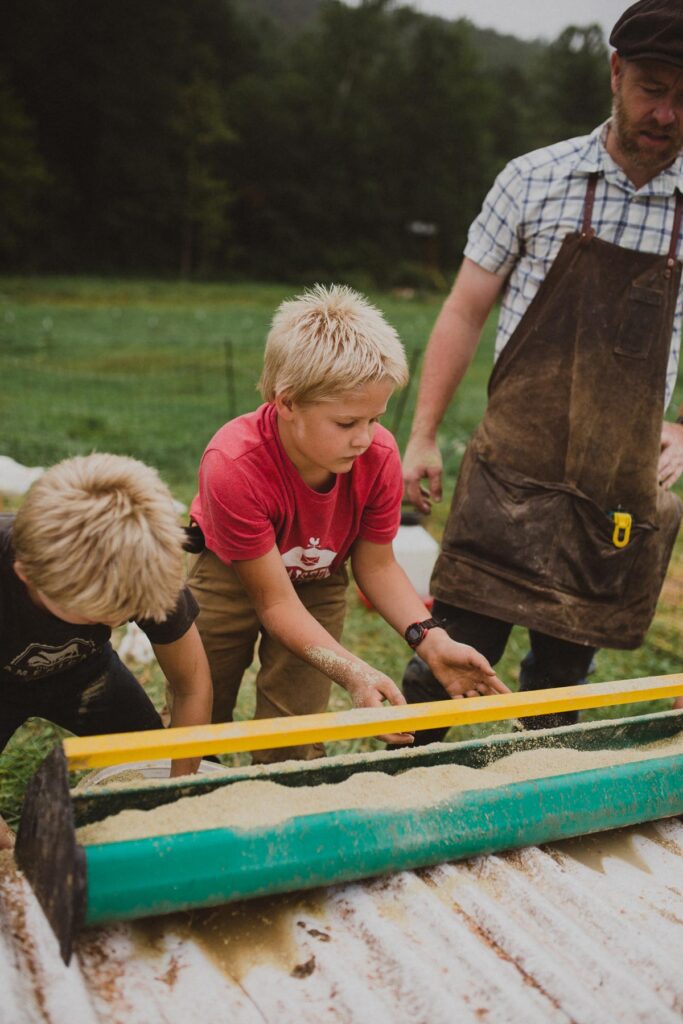
Feed Textures by Age
When you purchase chicken feed from the feed store, it comes in three consistencies, mash, crumbles and pellets. When feeding chickens, be sure to grind your ingredients for the appropriate age of your chickens.
Like a human baby, a chick is new to eating and will start with a consistency of feed similar to potting soil called mash. Because of their small beak, they cannot eat a larger consistency.
A crumble is the consistency of granola and is halfway between a mash and pellets. Chickens usually eat a crumble from age 12 weeks until they become laying hens.
Before making the jump to pellets, try mixing the crumble and pellets for a couple of weeks to get them used to a bigger feed.
The final consistency of chicken food is pellet. Reserve pellets for full-grown chickens.
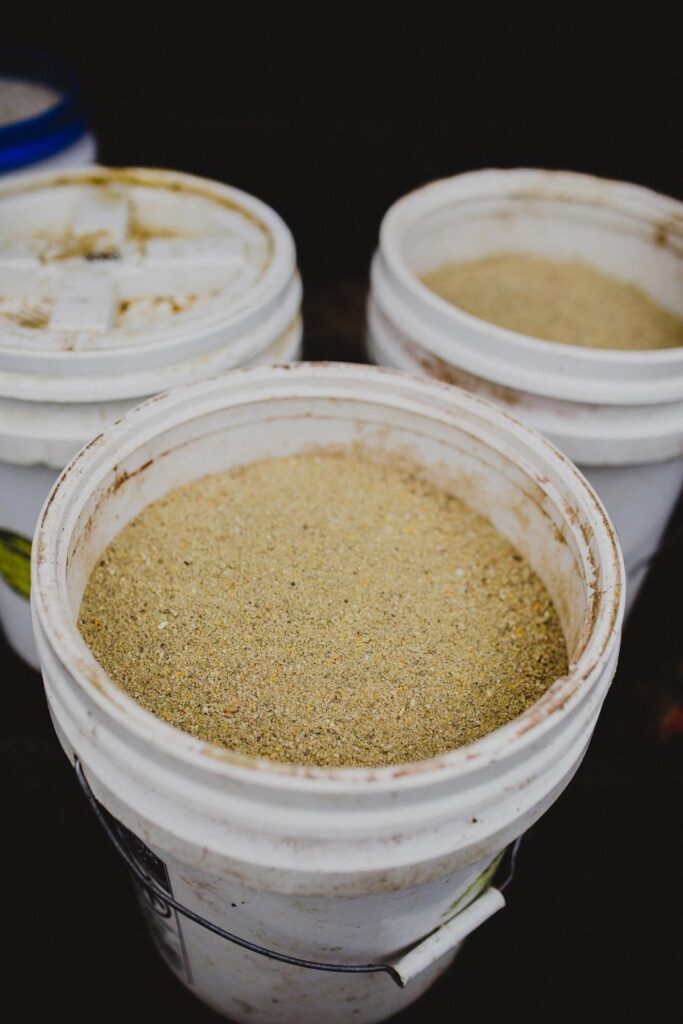
Supplies Needed for DIY Chicken Feed
- Feed Grinder – To make your feed, you will need a feed grinder like this one from Premier One. Pro-Tip: Be sure to educate yourself on what size screen to use. Don’t use the one that grinds your grains to a flour consistency. A fine consistency could become problematic in your chicken’s throat. Consider how you would feel after swallowing a big spoonful of flour.
- 5-Gallon Bucket – Use a bucket to weigh your feed ingredients.
- Scale – Use a farm scale to measure your ingredients. Use one with a TARE button to quickly return to zero after every added element. Most recipes come in percentages, and you’ll need to convert them to pounds. For instance, if you make 100 pounds of chicken feed and the recipe says it should be 49.7% corn, you can convert that to 49.7 pounds of corn. For 50 pounds of feed, it would be 24.85 pounds of corn, etc.
- Wheelbarrow – Use a wheelbarrow or other large container to mix the ingredients in.
- Shovel – Use a small shovel to mix the ingredients.
- Storage Container – Use a 50-pound feed bag, garbage can or another container to store your mixed feed.
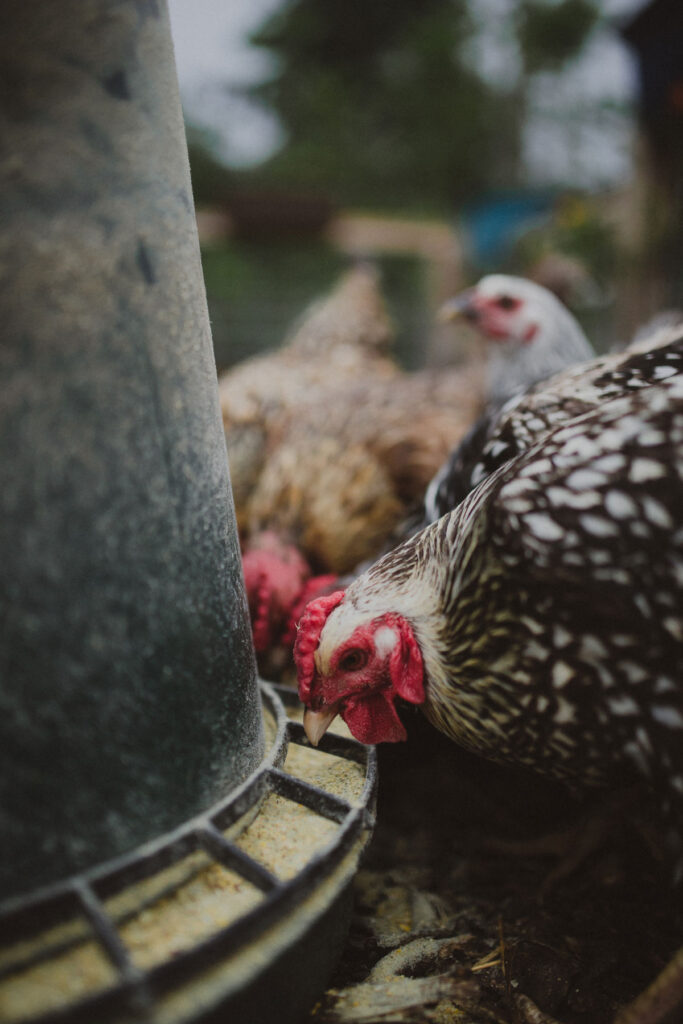
Mixing Your Own Chicken Feed Recipe
The below recipe originated from Joel Salatin’s instructions on mixing chicken feed shared in his book Pastured Poultry Profits. I have converted Joel’s percentage recommendations into easy-to-follow ingredient quantities to make a 50# bag of feed.
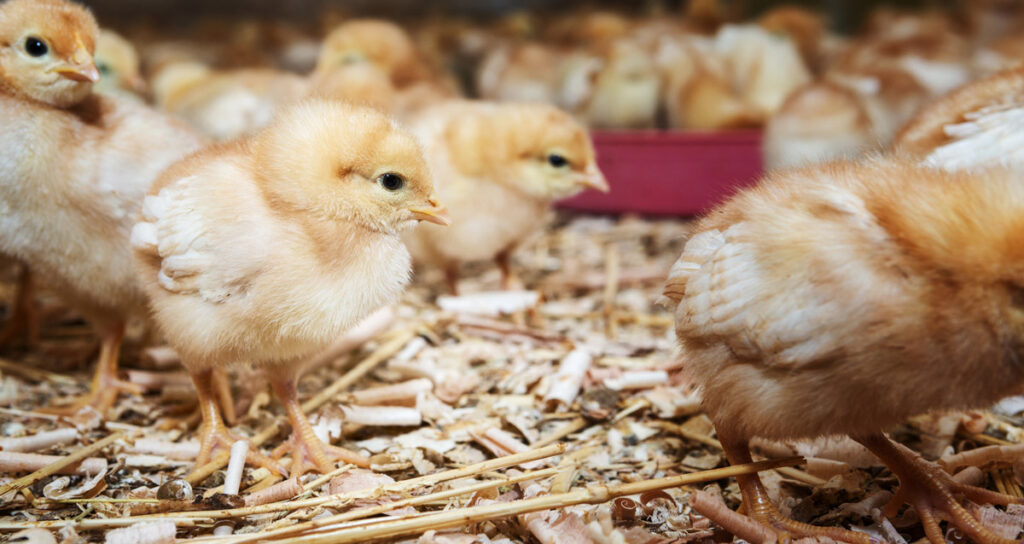
GROWER RATION
Chickens are healthier and grow faster when fed natural, vitamin-packed ingredients.
- 26# Dried Corn (52%) – Corn is a good source of carbohydrates in chicken feed and one of the crops you could grow on your own.
- 14.5# Roasted Soybeans (29%) – Roasted soybeans smell like peanut butter and taste good. Soybeans are a great source of protein.
- 5.5# Crimped Oats (11%) – It is recommended to crimp or roll your oats rather than grind them. Crimped oats are made by taking whole oats and partially flattening them. This damages the husk making them slightly easier to consume. Oats contain protein and carbohydrates but are also a good fiber source.
- .5# Feed Grade Limestone or Aragonite (1%) – Aragonite is made from ground oyster shells and provides calcium to your chickens.
- 1.5# Fertrell Nutri-Balancer (3%) – Fertrell Nutri-Balancer is a natural source of all the vitamins and minerals that chickens need.
- 1.75# Fish Meal (3.5%) – Joel Salatin prefers the Sea-Lac fish meal because they process it with low heat, preserving the vitamins and minerals. Fish meal is an excellent source of protein, vitamins and minerals.
- .25# Kelp Meal (.5%) – Use a kelp meal grown in cold water and dried geothermally. This way of processing helps to preserve the minerals. Kelp meal contains over 60 minerals, including amino acids, calcium, sulfur, magnesium, manganese, iron, zinc and copper.
- .5# Fastrack Probiotic (1%) – Probiotics boost the immune system and promote good digestion.
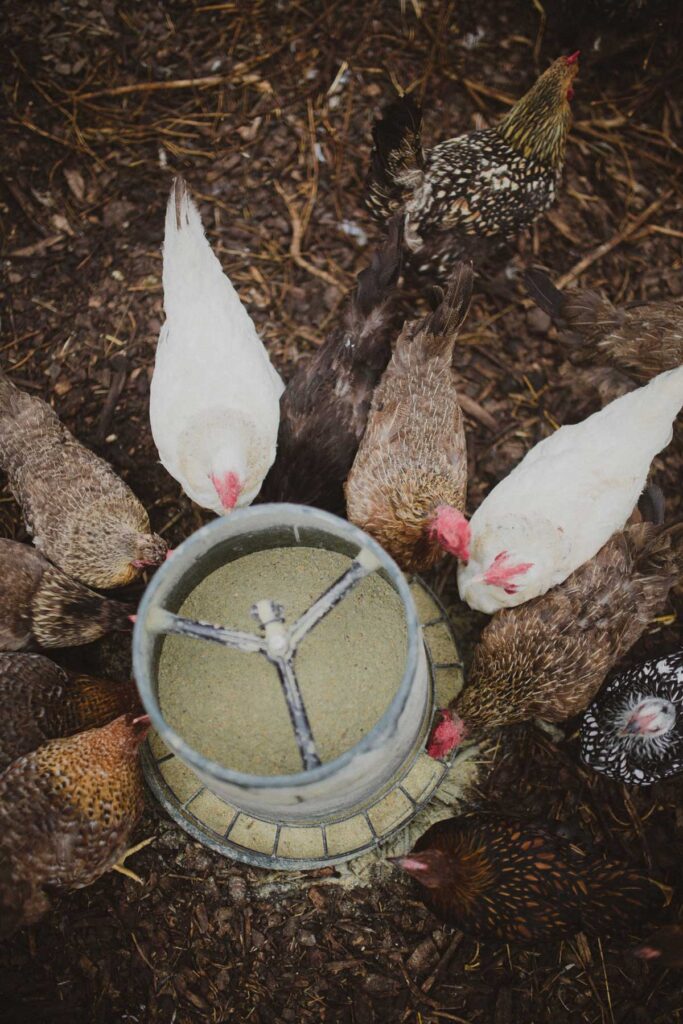
LAYER RATION
- 24.85# Corn (49.7%) – Corn is one crop you could grow independently and is a good source of carbohydrates in chicken feed.
- 15.4# Roasted Soybeans (30.8%) – Roasted soybeans are a great source of protein.
- 5.45# Crimped Oats (10.9%) – Oats contain protein and carbohydrates but are also a good fiber source. It is recommended to crimp or roll your oats rather than grinding them. Crimped oats are made by taking whole oats and partially flattening them. This damages the husk making them slightly easier to consume.
- 2.5# Feed Grade Limestone or Aragonite (5%) – Aragonite is made from ground oyster shells and provides calcium to your chickens.
- 1.5# Fertrell Nutri-Balancer (3%) – Fertrell Nutri-Balancer is a natural source of all the vitamins and minerals that chickens need.
- .25# Kelp Meal (.5%) – Use a kelp meal grown in cold water and dried geothermally. This way of processing helps to preserve the minerals. Kelp meal contains over 60 minerals, including amino acids, calcium, sulfur, magnesium, manganese, iron, zinc and copper.
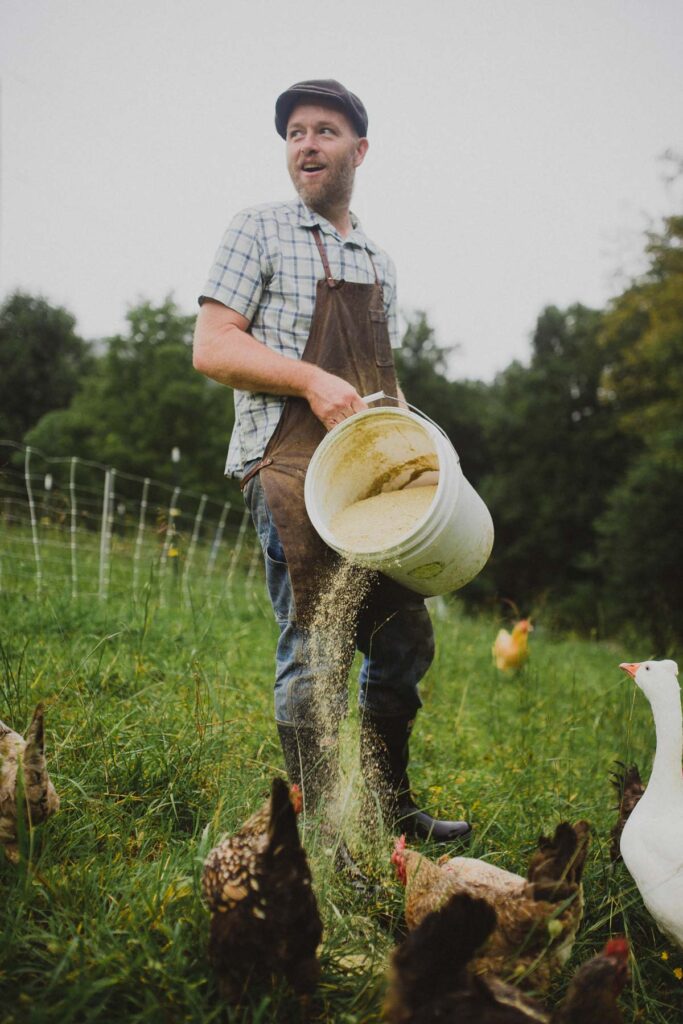
Mixing Your Own Chicken Feed
- Grind your corn and roasted soybeans using a mill.
- Place a 5-gallon bucket on your scale and push the TARE button to zero out the scale.
- Weigh the corn, soybeans, and oats and carefully dump them into your wheelbarrow or another large container.
- Pre-mix the remaining ingredients. Mixing first will help you keep from having large pockets of unmixed minerals in your chicken feed.
- When making the layer ration, weigh the aragonite, the Fertell Nutri-Balancer, and kelp meal, and mix in the five-gallon bucket before adding to the grains.
- When making the grower ration, include the fish meal and probiotic to the aragonite, Fertell Nutri-Balancer, and kelp meal in the five-gallon bucket.
- Add premixed ingredients to the ingredients in the wheelbarrow, and mix thoroughly. Pro-Tip: Check the corners of the wheelbarrow for pockets of ingredients hiding out.
- Transfer contents into a protective storage container, and enjoy your cost savings!
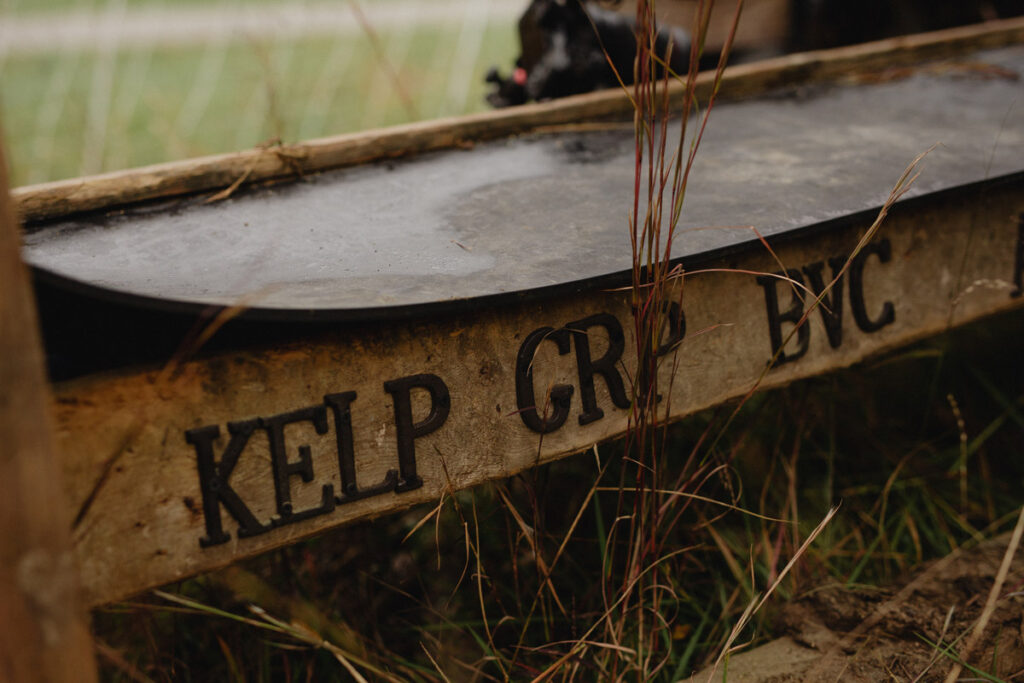
More Posts You May Enjoy
- Using Chickens to Create, Turn, and Spread Compost
- How to Set Up an Electric Fence on the Homestead
- ChickShaw-A Mobile Chicken Coop One Person Can Easily Move
- Mineral Supplements for Animals
- Raising Meat Chickens
- Why Do Chickens Stop Laying Eggs
- Chickens in Garden Spaces to Till and Fertilize
- Five Stages for Success With Breeding Chickens
- Using the Permaculture Approach for Your Chicken Flock
- Best Herbs for Chickens-How to “Herbify” Your Chickens Like Lisa Steele
- What Killed My Chicken? – How to Know

